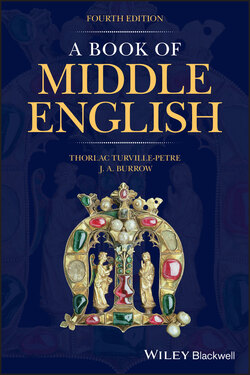Читать книгу A Book of Middle English - J. A. Burrow - Страница 54
5 Syntax 5.1 Gender
ОглавлениеIn Early Middle English, as in Old English, noun, adjective and pronoun agree in gender, as well as in case and number. The decay of the system of inflexions in nouns and adjectives and the simplification of the forms of the definite article, however, left nouns with progressively fewer indications of gender. In Old English se stān (nominative singular) is clearly masculine, and þre tale (genitive singular) clearly feminine, but the corresponding þe ston and þe tales in Middle English have no indications of gender. With such developments the notion of grammatical gender could not long survive, and it was replaced by the present distinction between human male, human female, and nonhuman: ‘natural gender’. Nouns in Early Middle English still commonly retain grammatical gender, as indicated by forms of the article, or by pronouns or adjectival inflexion; e.g. (with the nominative feminine of the definite article) þo ule, ‘the owl’, 2/26, he referring to halm, ‘helmet’, 3/19, scaft stærcne (with the ‐ne masculine accusative inflexion of the adjective), 3/59.
In later texts examples of references to inanimate objects as ‘he’ or ‘she’ are generally to be explained as personifications rather than as survivals of grammatical gender: ho, ‘she’, referring to suffraunce, 8/4, Zeferus … he, þe cler sunne … ho, 8/470–2.
